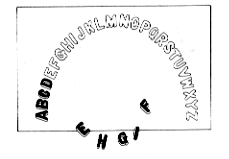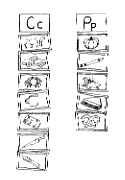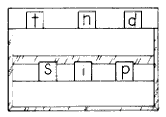Editor’s note: This article was adapted and excerpted from Straight Talk About Reading: How Parents Can Make a Difference During the Early Years , the bestselling book by Susan Hall and Louisa Moats.
Research over the past 20 years has led to major conclusions about how good readers read well and how children learn to read. The findings point to the importance of six basic instructional principles listed below.
1. Begin teaching phonemic awareness at an early age
In one study of 1,400 kindergarten children, the researchers observed whether the teachers included any phoneme awareness instruction in their lessons. They found that children who were “at risk” for failure were much more likely to be good readers at the end of first grade if their teachers had called attention to sounds and syllables in kindergarten.
Other studies have compared approaches to instruction and determined that children who score low on screening tests learn the skills more readily if they are taught directly. That means that for 10 to 20 minutes per day the teacher is helping children through activities that develop phoneme awareness at the appropriate level.
For children in the average range, who are not early or natural readers, wordplay, practice with sound matching, sound separation, and sound blending, and simultaneous instruction in letter-sound relationships is likely to enhance success.
Proactive parents need to determine if their child’s kindergarten instruction includes rhyming, syllable clapping, breaking words apart, and putting them together. Although most kindergarten teachers teach the alphabet, not all have lessons designed to raise awareness of sounds in words.
Many kindergarten teachers include a “letter of the week” activity that focuses on each letter, but not necessarily the identity of sounds in spoken words. For example, if a kindergarten teacher is on the letter j and includes jelly in the daily snack, and asks children to bring objects to school including jacks, jump rope, and a toy jeep, the children may not have learned that judge begins and ends with the same sound and that sound is /j/.
More examples of activities that develop phonemic awareness include:
- Substituting the phonemes in a word
Ask the child to think about what word is left if the s is dropped from the word sit. What if the first sound in it is changed to a?
- Sound matching
Do the words mice and men begin with the same sound? Which word in a list starts with a different sound (mat, mom, bat, milk)?
- Sound blending
The puppet likes to say words in pieces. Can you help him say the whole word together? Ti-ger. Pan-da. Chris-to-pher. St-eel. W-i-n-d.
2. Teach each sound-spelling correspondence explicitly
Because many children cannot easily or accurately recall sound-letter correspondences when they must apply them in reading whole words, it is best if the instruction is explicit and systematic. In some of the most effective early reading programs, the instructor teaches children the sounds with a key word (/g/ is the sound in goat), a story, and rhymes that use the sound repeatedly.
The children practice identifying, separating, and blending the sound into words. Then they read and write sentences with the letter-sound correspondence used liberally in the text.
3. Teach frequent, highly regular sound-spelling relationships systematically
Because some letters make two sounds (like the soft and hard sounds of the letters g and c), and because many sounds are spelled with letter combinations (like ph and oa), children need to learn a whole system of correspondences beyond the individual letters of the alphabet.
There are between forty and fifty speech sounds in English, depending on the linguistic analysis cited, and several hundred ways to spell them. The most frequent can be taught in an orderly, sensible way, with emphasis on those that are most useful and common, so that children can read almost any new word they encounter.
4. Show children exactly how to sound out words
The most effective early reading programs show children how to read through a word, sound by sound, and to rely on this strategy as the first one they try. The programs also teach the use of context and meaning to check whether a reading makes sense. For example, if a child sounds out the word was as /w/ /a/ /z/ the context should help the child alter his or her pronunciation and to continue reading with meaning.
5. Use connected, decodable text for children to practice the sound-spelling relationships they learn
It is a basic principle of learning that we must practice new skills until they are learned. The most effective programs have books for children that contain a high percentage of words that can be sounded out using the skills the children have been taught. The number of sight words, such as and, the, and you, is kept to a minimum at first and gradually expanded with a few at a time as practice is provided.
6. Read aloud and surround children with interesting, high-quality books
While children are at the early stages of learning to read, they can understand oral language that is much more complex than what they can read themselves. Knowledge of word meanings and familiarity with the language in books is gained when teachers and parents read aloud to children from books at their interest level. While children are learning to read, they can learn about the world that opens up to them through reading and continue to acquire vocabulary, background knowledge, and an acquaintance with the more complex language of books.
Counting, matching, and naming Letters: An activity to teach your child the alphabet
Ages: Preschool and Kindergarten
What You Need:

- Set of plastic alphabet letters – preferably capital letters
- Mat that you make on an 11 ” x 17” piece of firm paper.
- Trace the plastic letters and fill them in, in an arc shape, so that the plastic letters will fit over the letters written on the arc. The arc should extend from the lower left to the lower right corner.
What You Do:
- Ask your child to count how many letters there are.
- Then ask your child to place the plastic letters on the matching letters on the arc of the mat.
- Teach her the name of each letter, introducing about four new letters per day. For example, “This is the letter A.”
- After she can differentiate the letter shapes and has been taught the names of each letter, ask her to say the name of the letter as she places it in position on the arc.
- Repeat often, until your child can recognize each letter, place it over the corresponding symbol on the arc on the mat, and say the name of each letter. Generally, it takes several weeks for a child to master all the letters.
Picture sort by initial consonant sound: An activity to help your child develop an awareness of speech sounds
Ages: Preschool and Kindergarten
This activity draws your child’s attention to the sound of the initial consonant in the words.
What You Need:

- Cards with pictures of familiar objects (e.g., snake, dog, cat)
- Cards with letters that correspond with initial consonant sounds of the picture cards
What You Do:
- Sort the pile of picture cards so that you use only the pictures that correspond with the letters you are going to use this time.
- Put two letter cards out as column labels.
- Say the letter sound.
- Take one picture card for each sound and position it under the column heading.
- Hand your child one card at a time and ask her to say the word. You need to make sure she is calling the picture by the name you expect (i.e., rabbit instead of bunny).
- Ask her to position the card in the appropriate column to match the sound of the beginning consonant.
- Ask her to repeat all the words in the column to check that the card is in the right place.
- After your child is proficient with two columns, increase to three and then to four columns. Once she has mastered this, you can add a miscellaneous or “?” column for anything that doesn’t fit.
Sound board: an activity to develop early reading skills
Age: First Grade
Educators refer to this activity as a sound board because they use a board with pockets to hold the letters. The child is asked to select letters from the top pocket and move them to the bottom pocket to write a word.
This activity is included in a Reading Readiness workshop taught by Suzanne Carreker of the Neuhaus Education Center. Her sound board is a piece of cardboard 8 1/2 ” high by 11” wide, with two horizontal pockets to hold the letters.
What You Need:

- Sound board – you can make it with two 8 1/2” x 11” pieces of cardboard.
- Use one as the back and cut the other to make the pocket strips.
- Tape the bottom and sides of two 2” strips horizontally across the 11” width.
- Letter cards – you can make these with 3” x 5” index cards cut in half
- Use all lowercase letters
- Write the letters on the top of the card so they can be read when stuck in the pockets.
What You Do:
- Put the sound board in front of your child.
- Position six letters in the top pocket.
- Say the word you want your child to write.
- Ask your child to echo the word and move the appropriate letters down to the lower pocket.
- Ask your child to read the word.
- Then ask him to change one letter to spell a different word.
Variations:
After your child can do this easily, try several variations. Increasing the number of letter choices makes the task more difficult. Changing the middle vowel is more difficult than changing the beginning or ending consonants.
Adapted and excerpted from: Hall, S. L. & Moats, L. C. (October, 1998). Straight Talk About Reading: How Parents Can Make a Difference During the Early Years. Contemporary Books. Reprinted with permission.
